SIBF 2026 24(Wed) - 28(Sun) June, 2026 l COEX Halls A&B1
Archive
Digital Book Exhibition: Book in the Post-media Age
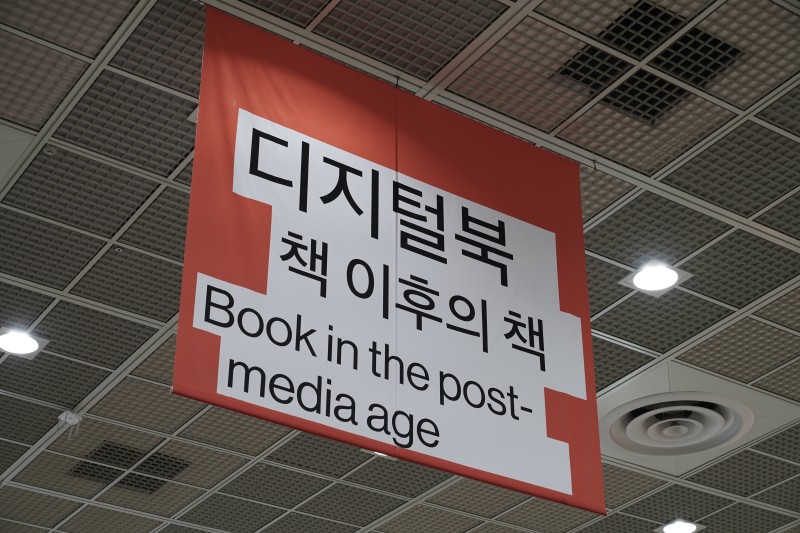
Books in the Post-Media Age is a special archival exhibition that explores the relationship between digital technology and book culture within the context of book history.
The digital revolution of the late 20th century changed the media environment so radically that it is impossible to imagine life today without computers, the internet, or smartphones. Consequently, book culture has also entered a period of great transition. E-books and audio books, unspecifiable forms of books that require no paper or printing, are rapidly taking up a larger share of not only the publishing industry but also daily reading life.
〈Composition〉
Section1. What Can Be Considered a Book
Section2. Spaces for Digital Books, Digital Spaces for Books
Section3. Redefining Authors
Section4. Reading Bodies and Sensory Technology
Section5. The Books Yet to Come
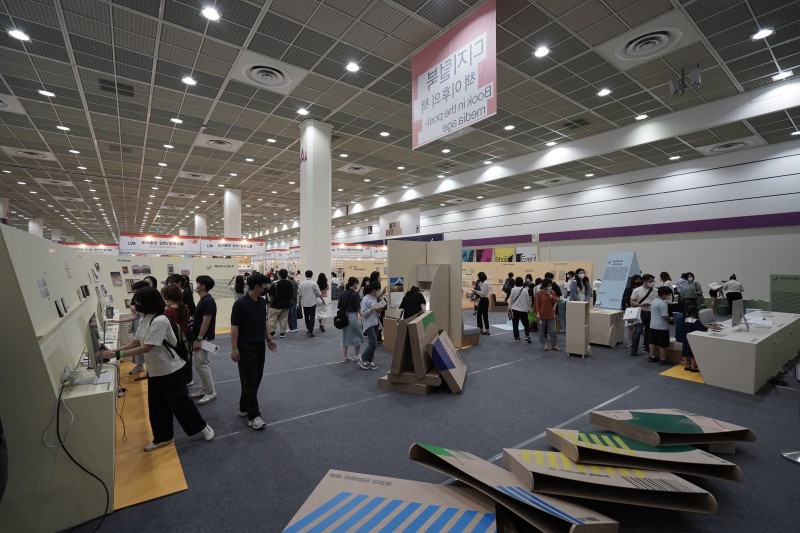
Post-Media Age/Late Age of Print
Books as an individual medium seem to be giving way to “book experiences,” or types of reading (and writing) occurring in a “multisensory environment” and using a range of platforms. What changes is book culture going through in a post-media age in which digital technology has dismantled the boundaries of traditional media and given rise to fusion variants? How have books changed and how are people’s uses of and sociocultural attitudes toward books changing? From a historical perspective, this exhibition sheds new light on the transformed book culture of the present dubbed the “late age of print.”
- Curator: Lee Sang-gil
- Researchers: Chae Woongjun (executive researcher), Seo Do-won, Lee Seung-been, Jeon Sol-bee
- Space and graphic designer: JETTRAKS
Section1. What Can Be Considered a Book
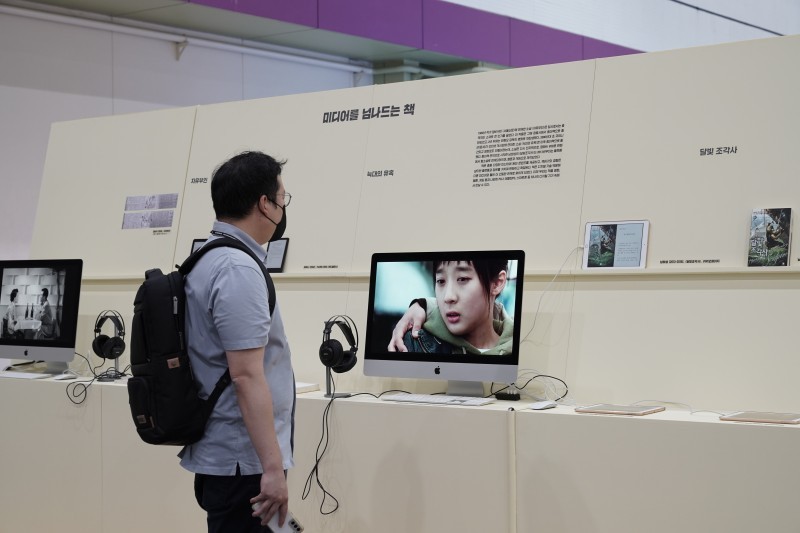
When thinking of a book, the classic image that comes to mind is of rectangular sheets of paper bound together in a sequence.
This traditional concept is rapidly changing with the introduction of the e-book, a technology that has settled in daily life through web novels, online encyclopedias, and how-to guides on platforms ranging from personal computers and CD-ROMs to smartphones, tablet PCs, e-book readers, and cloud computing. While many e-book devices have evolved to mimic the shape of a classic book, the digital technology and internet environment on which such gizmos were founded are leading to a sense of “closure”—a defining characteristic of printed books—that makes printed books more obsolete. E-books are transcending the limits of the book as a physical object counted in volumes, taking advantage of audiovisual formats that go beyond text and demonstrating openness as an apparatus that can be connected online. And as the content industry widely expands through digital convergence, another growing trend is the return to the classic medium of books by movies, dramas, webtoons, animation, and video games. Similar phenomena have been around for a long time, but in the digital age, the range of book genres affected by such technology is incomparably wide and growing at unprecedented speeds.
Section2. Spaces for Digital Books, Digital Spaces for Books
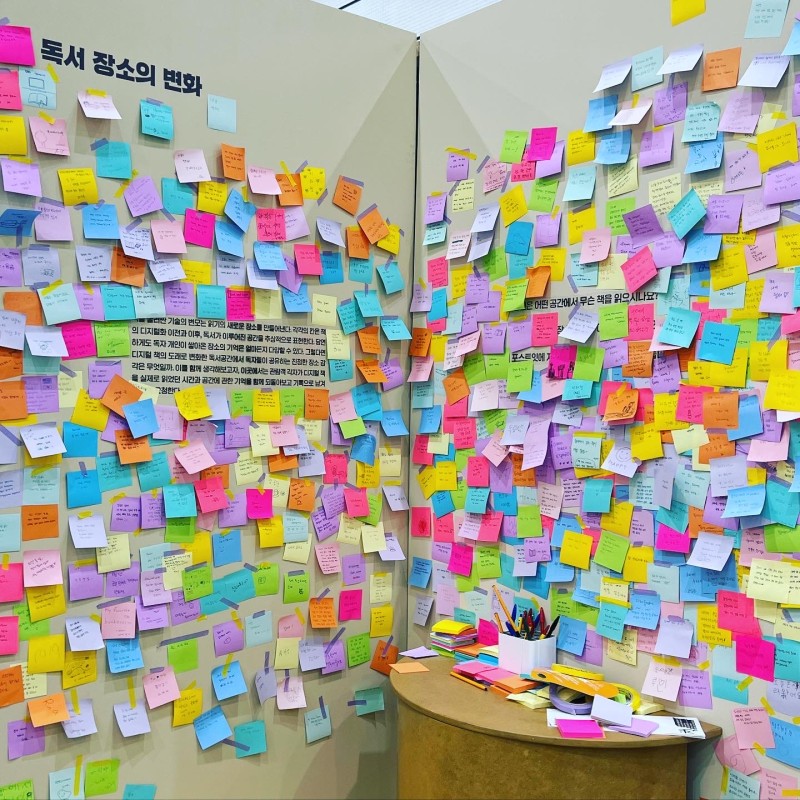
The images of a collapsed bookcase and a library housing every book in the world attest to the material nature of traditional print books.
Paper books, which come at varying volumes and weight, need to occupy physical space. Bookcases, study areas, bookstores, and libraries have long been at the center of individual and communal book culture. Attempts to enhance the mobility of bookcases and reduce the regional basis for libraries have also sprung from this context. The introduction of e-books, however, has reassigned spaces designated for writing and reading to RAMs and CD-ROMs of computers, the internet, and web pages. The newly emerging types of books are written, organized, and reconstructed in immaterial space. Cyberspace today is mostly perceived as an ever-expanding space for text, a colossal book, or even a vast universe. Digital bookcases transcend not only the limits of physical storage but also geopolitical limits such as accessibility and government-level censorship. As the physical form of books has evolved, the places to read them have also undergone transformation. Digital books generate alternative reading places and the space for such books in the digital world has become a converged place encompassing both the online and offline worlds. The latest attempts to relocate bookstores and libraries to the metaverse paint a picture of how book culture is being transformed in response to contemporary media and spatial sensibility.
Section3. Redefining Authors
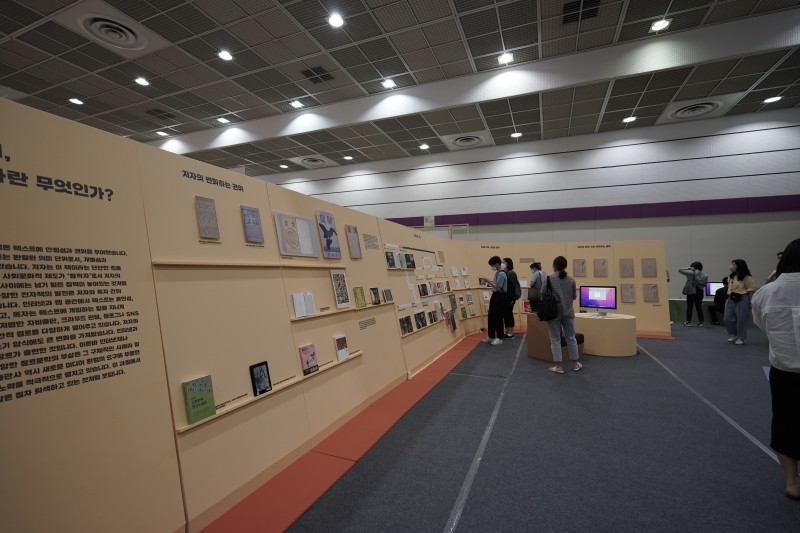
The traditional paper book format gave text stability and authority.
Through the book’s material properties, the text could acquire individuality, permanence, and invariability as a complete unit of meaning. In this sense, book authors were like people who built a concrete house. The sociocultural system surrounding publishing guaranteed the authors’ authority as “creators,” building an insurmountable wall between them and readers. The arrival of digital technology and forms of digital books closed the gap and even blurred the boundaries between authors and readers. On the internet or in web spaces, text took on the qualities of flexibility, interactivity, and changeability, while readers gained the authority to intervene in the text. The digital environment is also opening alternative routes to authorship such as affordable self-publishing, crowdfunding, blogs, and social media. The erasure of boundaries between authors and readers has also brought significant changes to the general style of writing. Emerging from the internet and web spaces have been new styles and genres of writing exemplified by the trends of “internet slang,” “blog-style writing,” and cult literature. Established writers and publishers are also implementing strategies for marketing and content production to meet the ever-changing demands of the media environment. Yet in the process, the prestige and status authors once held seem to be slowly diminishing.
Section4. Reading Bodies and Sensory Technology
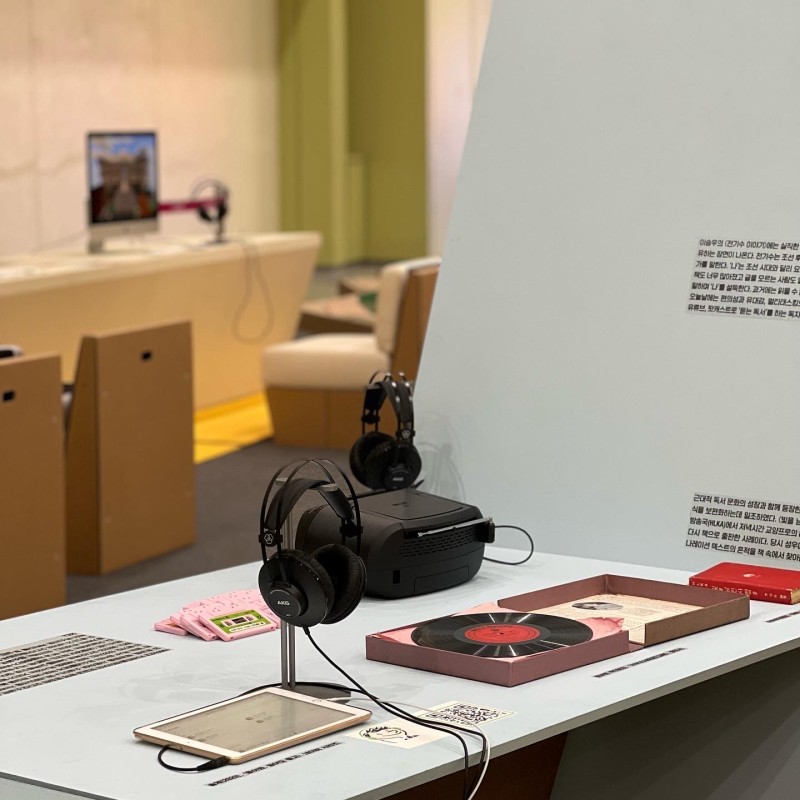
Reading a book is often considered a silent and static act that merely utilizes the visual sense.
But from a historical perspective, the gestures made while reading can be seen as a pattern popularized during modern times that remains typical body language in the present day. The habit of reading in silence only with the eyes has a lot to do with the makeup of printed books, which consist of static pages of text. On the other hand, digitized books composed of a dynamic network of text and audiovisual elements are shaping new ways of reading. Today, synesthetic methods of reading require more than one sense, not to mention audiobooks, which totally replace silent eye movement with listening. The format’s potential to engage other senses especially offers disabled people more choices in reading methods. Meanwhile, multimedia-based e-books containing short or conversational content, images, and videos renew and expand the reading experience to “listening,” “writing,” “tapping,” and “clicking.” Digital technology is leading to more convenience from touching to motion, face, and gaze recognition to enable reading with minimal physical gestures.
Section5. The Books Yet to Come
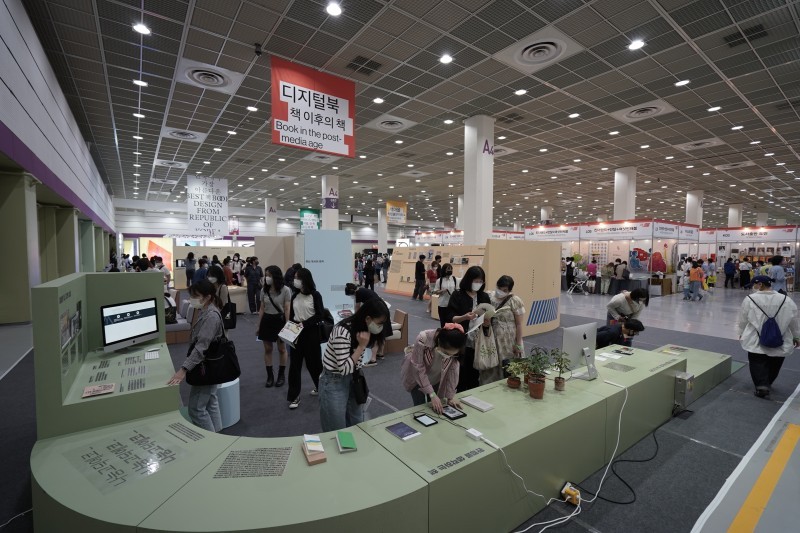
In 1930, American avant-garde writer and publisher Robert Carlton Brown devised a reading machine called the Readies modeled after sound films, which were called “talkies” at the time.
The Readies prevented the development of an optical projector to present text on microfilm through a magnifying lens, but Brown said in his plan that such a machine would significantly reduce the cost of paper, ink, and manual labor that goes into producing paper books. As e-books took their first steps in 1971 and entered full-scale development, some even argued that printed books were bound for obsolescence. But the question isn’t whether e-books will kill their paper counterparts. What is important is to continue observing how the digital revolution has changed book culture and envision a healthy future for it. As seen through media history, new forms of sociocultural imagination have always preceded technological advances, serving as impetuses to guide technology in a certain direction. The potential of traditional print and e-books for alleviating the global ecological crisis and complementarily coevolving to protect the environment, allowing equal representation of more voices to expand horizons, and promoting freedom, communication, and resistance are among the topics to discuss until the advent of “The Books Yet to Come.”



